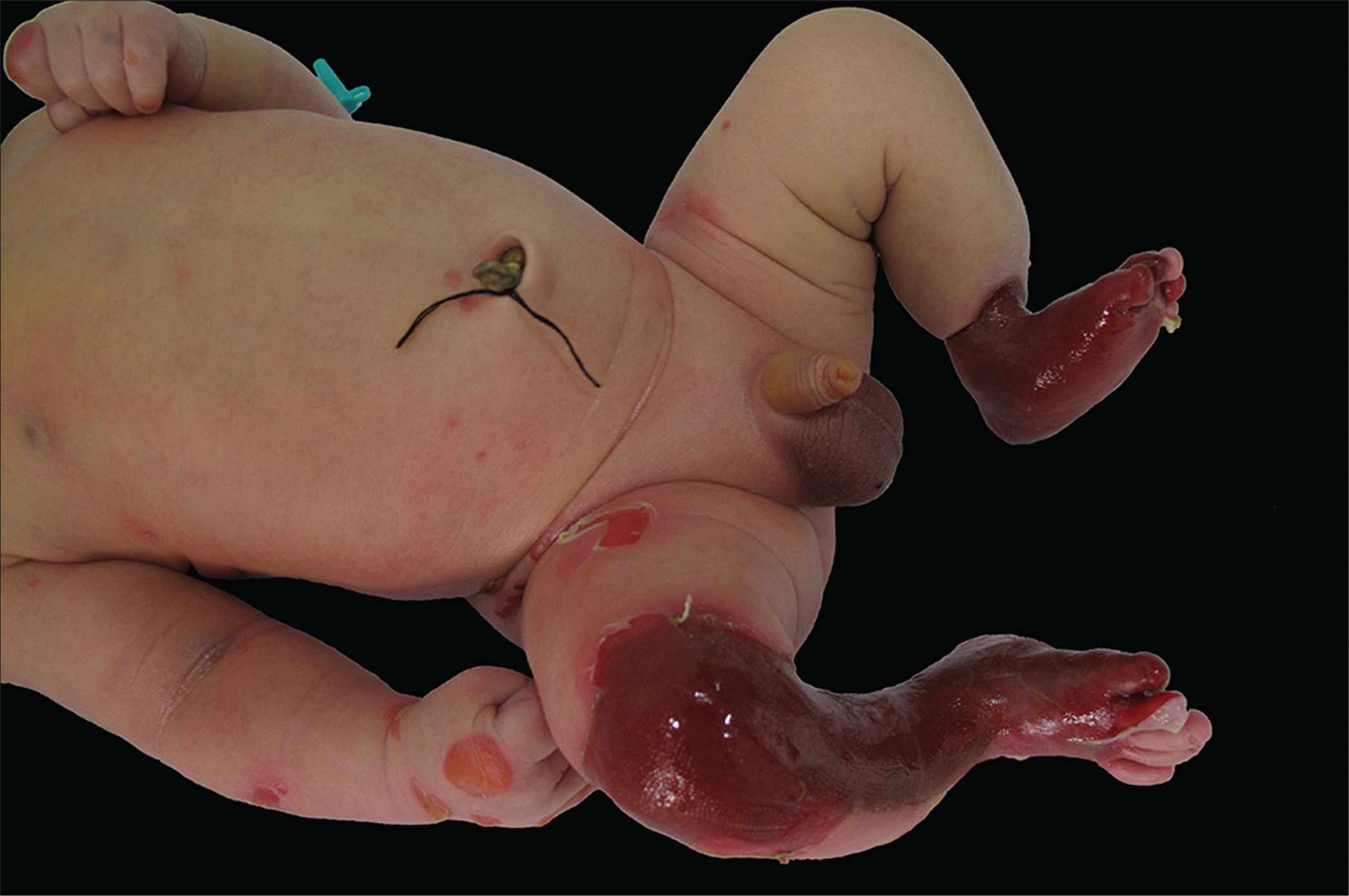Translate this page into:
Aplasia cutis congenita with dystrophic epidermolysis bullosa: Bart syndrome
Chao Zhang and Xue Gang Xu contributed equally to this paper
Corresponding author: Prof. Xing Hua Gao, Department of Dermatology, No.1 Hospital of China Medical University, 155 North Nanjing Street, Shenyang 110001, China.gaobarry@hotmail.com
Prof. Liang Zhang, Division of Neonatology, No.1 Hospital of China Medical University, 155 North Nanjing Street, Shenyang 110001, China.zhangliang1978@gmail.com
-
Received: ,
Accepted: ,
How to cite this article: Xu XG, Zhang C, Qin J, Gao XH, Zhang L. Aplasia cutis congenita with dystrophic epidermolysis bullosa: Bart syndrome. Indian J Dermatol Venereol Leprol 2022;88:210-11.
A 9-h-old newborn boy was admitted in our care-unit with localized absence of skin. On dermatological examination, we detected congenital and localized absence of skin extending from the right knee to dorsum of ipsilateral foot in strip-shapes. The entire left foot was also involved. Additionally, we observed several flaccid and tense bullous lesions on the face, oral mucosa, upper limbs and back containing translucent fluid. [Figure 1]. Nail involvement was also noted, and they appeared rudimentary. Histopathological examination of a bulla revealed sub-epidermal cleft, consistent with the diagnosis of epidermolysis bullosa. Direct immunofluorescence failed to demonstrate IgA, IgG, IgM or C3 depositions at the dermal-epidermal junction, thus ruling out epidermolysis bullosa acquisita. We performed whole-exome sequencing to confirm our diagnosis and detected the mutation c.6801delA chr3:48610325 p.K2267fs with exon 86 and c.3625_3635del chr3:48623595 p.S1209fs with exon 27 of COL7A1. Based on clinical presentation, corroborative histopathology and genetic analysis, we made a provisional diagnosis of Bart syndrome. We advised symptomatic measures including skin-care and tips for preventing infection, and regular follow-up.

- Localized absence of skin on the anteromedial aspect of the right lower extremity and the left foot and bullous lesions on the limbs and trunk
Declaration of patient consent
The authors certify that they have obtained all appropriate patient consent forms. In the form, the legal guardian has given his consent for images and other clinical information to be reported in the journal. The guardian understands that child’s names and initials will not be published and due efforts will be made to conceal the identity but anonymity cannot be guaranteed.
Financial support and sponsorship
This work was supported by the National Key Research and Development Program of China (No. 2016YFC0901504) and the 111 Project (D18011).
Conflicts of interest
There are no conflicts of interest.





